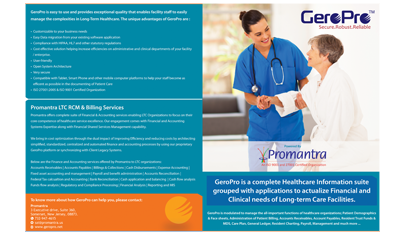Improving Skilled Nursing Reimbursement Rates

Skilled Nursing Facilities (SNFs) are under increasing financial pressure due to declining reimbursement rates, claim denials, and complex billing regulations. To remain profitable while providing quality care, SNFs must adopt strategic revenue optimization techniques.
This guide explores proven strategies to enhance reimbursement rates, including accurate documentation, optimized billing practices, effective insurance negotiations, and technology-driven revenue cycle management.
1. Understanding the Challenges in Skilled Nursing Reimbursement
SNFs primarily receive payments through Medicare, Medicaid, and private insurers. However, reimbursement rates are often influenced by several factors:
- Regulatory Changes: Updates in CMS reimbursement models can significantly impact facility revenue.
- Claim Denials and Payment Delays: Errors in coding and documentation frequently lead to rejected claims.
- Inadequate Negotiation with Insurers: Many facilities accept lower rates due to a lack of negotiating power.
- Complex PDPM Structure: The Patient-Driven Payment Model (PDPM) determines Medicare rates based on patient conditions, necessitating precise documentation.
Case Study
A Texas-based SNF faced a 15% revenue decline due to frequent claim denials and missing PDPM qualifiers. By enhancing documentation training and utilizing AI-driven coding software, they reduced denials by 30% within six months.
Key Takeaway: Identifying reimbursement challenges enables SNFs to implement targeted strategies for revenue improvement.
2. Optimizing Billing and Documentation for Higher Reimbursements
Accurate billing and documentation are essential for ensuring that SNFs receive full reimbursement for the care they provide.
2.1 Accuracy in Medical Coding and PDPM Documentation
How to Improve Coding and PDPM Documentation:
- Regularly train staff in ICD-10 coding and PDPM documentation.
- Utilize automated billing software to minimize human errors.
- Ensure thorough documentation of co-morbidities and functional status to maximize PDPM scores.
- Conduct regular audits to identify and correct errors before submission.
Example
A Florida SNF increased PDPM reimbursements by 20% after implementing a checklist-based documentation process that ensured accurate patient classification.
Key Takeaway: Thorough documentation and proper coding directly influence reimbursement rates.
2.2 Reducing Claim Denials and Payment Delays
Denied claims can delay cash flow and diminish revenue. Common reasons for denials include missing information, incorrect coding, and insufficient medical necessity documentation.
Strategies to Reduce Denials:
- Implement automated pre-billing checks to catch errors before claim submission.
- Establish denial management teams to track and appeal rejected claims.
- Use real-time eligibility verification to avoid billing ineligible patients.
- Standardize workflows for timely follow-ups on unpaid claims.
Case Study
A Midwest SNF reduced denial rates from 18% to 5% by introducing automated claims validation and pre-submission audits.
Key Takeaway: A proactive approach to billing and denial management can significantly reduce revenue loss.
3. Enhancing Negotiations with Payers for Better Reimbursement Rates
Many SNFs accept lower insurance reimbursement rates due to ineffective negotiation strategies. However, negotiating better contracts with payers can substantially increase revenue.
How to Strengthen Payer Negotiations:
- Gather data on operational costs and patient outcomes to justify higher rates.
- Compare competitor reimbursement rates to bolster negotiation arguments.
- Utilize contract management software to track and review agreements.
- Consider value-based payment models to secure higher rates based on care quality.
Example
A California SNF successfully renegotiated a 10% higher reimbursement rate with a private insurer by demonstrating improved patient recovery outcomes.
Key Takeaway: Data-driven negotiations can enhance contract terms and boost profitability.
4. Leveraging Technology to Maximize Reimbursement Efficiency
Automation and data analytics can help SNFs streamline billing, coding, and reimbursement tracking.
Tech Solutions for Reimbursement Optimization:
- AI-Powered Billing Software: Detects claim errors before submission.
- EHR Integration with Billing Systems: Ensures seamless data flow and accuracy.
- Predictive Analytics: Forecasts reimbursement trends and payment risks.
- Automated AR Tracking: Identifies delayed payments for quicker resolution.
Case Study
A New York SNF adopted an AI-driven billing system, reducing claim processing time by 40% and improving overall revenue collection.
Key Takeaway: Investing in technology enhances accuracy, efficiency, and revenue cycle performance.
5. Diversifying Revenue Streams Beyond Traditional Reimbursement
Expanding beyond Medicare and Medicaid can reduce financial reliance on government reimbursements.
Alternative Revenue Strategies:
- Develop private-pay specialty services (e.g., memory care, rehabilitation programs).
- Offer outpatient therapy and wellness programs.
- Partner with Accountable Care Organizations (ACOs) for enhanced reimbursement opportunities.
- Monetize unused facility space by leasing it to medical practitioners.
Example
A Chicago SNF increased annual revenue by 15% by introducing a private-pay physical therapy program for local seniors.
Key Takeaway: Diversifying services strengthens financial stability and profitability.
6. How LTCPro Can Help SNFs Improve Reimbursement Rates
LTCPro is a leading financial management software designed for SNFs to maximize revenue and streamline billing operations.
LTCPro’s Key Benefits:
- Automated Claims Processing: Reduces errors and minimizes denials.
- AI-Driven Coding Assistance: Ensures accurate PDPM documentation.
- Real-Time Reimbursement Tracking: Provides insight into pending payments.
- Contract Management System: Aids SNFs in negotiating better rates with insurers.
- Predictive Revenue Analytics: Identifies areas of revenue loss and improvement.
Case Study
A Tennessee SNF increased Medicare reimbursements by 22% after adopting LTCPro’s AI-driven billing system, which improved coding accuracy and reduced claim errors.
Key Takeaway: LTCPro enhances billing efficiency, ensuring SNFs receive full reimbursement.
Skilled Nursing Facilities must take proactive steps to maximize reimbursement rates and ensure financial sustainability. By focusing on billing accuracy, reducing claim denials, negotiating better rates, leveraging technology, and diversifying revenue streams, SNFs can significantly enhance their revenue.
Key Takeaways:
- Accurate documentation and PDPM coding ensure full reimbursement.
- Automation reduces claim errors and accelerates payments.
- Effective payer negotiations lead to higher reimbursement rates.
- Technology-driven revenue cycle management boosts financial performance.
- LTCPro provides cutting-edge solutions to optimize reimbursement efficiency.
A perfect fit for Skilled Nursing Facilities, Assisted Living Facilities, Home Health, Hospice and Other Day Care Centres.
Download BrochureRequest a demo


























